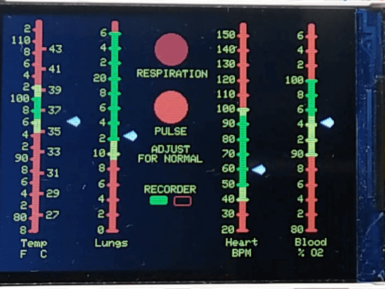
Overview
It can detect combustible Carbon Monoxide, Coal Gas and Liquefied Gas. The sensitivity can be adjusted by the potentiometer.
Hardware Overview
This is an Analog output sensor. It needs to be connected to any one Analog socket in Grove Base Shield. It is possible to connect the Grove module to Arduino directly by using jumper wires. When doing so, please refer to the connection table below:
|
Arduino |
Gas Sensor |
|
5V |
VCC |
|
GND |
GND |
|
NC |
NC |
|
Analog A0 |
SIG |
The output voltage from the Gas sensor increases when the concentration of gas. Sensitivity can be adjusted by rotating the potentiometer.
Please note that the best preheat time for the sensor is 24 hours and above.
Note: Hot-swapping the grove may lead to IC burnout, please turn off the power of main board before swapping grove.
Tech specs
Specification
|
Item |
Parameter |
Min |
Typical |
Max |
Unit |
|
VCC |
Working Voltage |
4.9 |
5 |
5.1 |
V |
|
PH |
Heating consumption |
0.5 |
- |
340 |
mW |
|
RL |
Load resistance |
adjustable |
|||
|
RH |
Heater resistance |
- |
33Ω±5% |
- |
Ω |
|
Rs |
Sensing Resistance |
2 |
- |
20000 |
Ω |
|
CO/CH4/LPG Scope |
Detecting Concentration |
200 |
- |
1000/10000/10000 |
ppm |
Technical Details
|
Dimensions |
130mm x 90mm x 23mm |
|
Weight |
G.W 15g |
Get Inspired

Control the speed of a 12 volt computer fan using a PWM duty cycle

The future envisioned in the original Star Trek included, among other things, a shipboard sickbay with electronic monitors strangely reminiscent of the machines that medical personnel use today. To recreate a functional mini-replica of these displays, YouTuber Xtronical turned to a 2.8” TFT screen, a breadboard, and an Arduino Nano—noting that an Uno would also work. The LCD display nails the look of Dr. McCoy's device, and heartbeat sound can be played along with an onscreen flashing “PULSE” circle. A MAX30100 pulse/oximeter sensor and a temperature sensor take body readings, while a second DS18B20 is implemented to read ambient conditions for increased accuracy. It’s a fun Trekkie project, and Xtronical plans to elaborate on how it was made in future videos. A build of a working original Star Trek display with real sampled heart beat sound. Uses various sensors to get the readings from your body (via just your fingers) and displays them in the style of the 60's sick bay screen. This bare "Bones" system could be built into a model unit or even a replica Tricorder.





